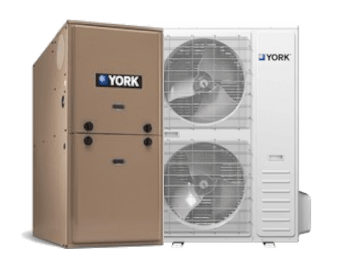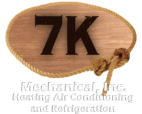
What is an HVAC System How Does an AC Work
In today’s blog post we are going to be looking at learning about H.V.A.C. systems. Specifically, what is an H.V.A.C. and how does it work? This article will not be nearly long enough to provide a full understanding of air conditioners however it will get you started and provide valuable information that will help you understand what is in your home, and how it works!
What does H.V.A.C. stand for? – H.V.A.C. stands for Heating, Ventilation, and Air Conditioning. So let’s break it down in that order.
Heating – This seems pretty obvious and yes, things like a fireplace could be considered heating, but how does it work in an HVAC system? There are many ways that we achieve heating in our homes here we will talk about three of them.
Electric Heating: Electric-Heating is very straightforward. An electric coil called the heating element is installed inside of the indoor unit, called the Air Handler. When it’s powered it puts off heat.
Gas Furnace: A gas furnace burns natural gas or LPG (propane). This method requires specific ventilation to remove exhaust gases. Gas furnaces are often in competition for the most cost effective heating method because in some areas in home gas power is very cheap.
Heat Pump: This is a very ingenious method of heating where the refrigerant is processed in reverse! So instead of pulling the heat from inside and dissipating it outside, it pulls heat from outside and brings it inside. We’ll really go into detail in a separate, dedicated blog.
Ventilation – This is crucial to the operation of your home HVAC. Proper, balanced airflow is just as important as refrigerant levels and functional hardware. To be fair, that is like saying that one vital part of your car is just as vital as another crucial part. An AC system requires many factors to work properly in order for the system as a whole to be effective, or even functional.
The ductwork in your home, if it’s properly designed and installed, pulls air from the hotter parts of your home and disperses cooler air evenly around your home. In some cases outside air will be integrated into the system. We’ll dive into ductwork and airflow in a separate dedicated blog.
Air Conditioning: This is the part where we are going to dive into some more detail. You know your AC is working when it blows cold air; but how does it do that? When your thermostat is set to cooling the entire system is working for one goal, and it might not be what you expect. It is processing and handling refrigerant. There are two primary components to any AC system. The outdoor unit is called the Condensing Unit, and the Indoor unit is called the Air Handler or sometimes a Furnace. The compressor, which is part of the condensing unit is the heart of the system that keeps the refrigerant flowing through the system. The general job of the condensing unit is to take the refrigerant vapor that has just been used to cool your house and turn it back into a liquid for another trip back into the house. The refrigerant is condensed back into a liquid by raising the pressure, with the compressor, and removing heat, in the condenser coils. The heat is removed from the coils by outside air blown across it by the fan. The refrigerant then heads back into the house to the air handler where the blower moves the filtered home air across the evaporator coil. This is where the magic happens. The liquid flows through a device that drops the pressure, we call this an expansion device (TXV, expansion valve, orifice, or piston). This pressure drop causes the liquid to boil at a very low temperature. The boiling removes the heat from the evaporator coil and subsequently the air in the same way a pot removes heat from your stove. From there the refrigerant heads back to the condensing unit outside as a vapor to start the cycle over again.
The Thermostat: This part is actually pretty important. For starters, your thermostat doesn’t just tell your AC what temperature you want. It also reads the temperature in the room so it can let the AC know when to turn on, and when it’s done cooling. If your thermostat was installed without giving thought to the placement of it then there can be a lot of issues. If your thermostat is in direct sunlight, or mounted on an exterior wall, then it will continue cooling other parts of your home until it itself gets to the correct temperature. On the other hand, if it is getting direct airflow then it may fail to allow your system to cool your home. Because it will hit the target temperature before the rooms do. Some modern ‘smart’ thermostats can detect situations like these and automatically adjust. There are also some thermostats that support temperature sensors you can place throughout your home. Some systems when coupled with remote duct dampers can keep temperatures in your home, even in certain rooms.
Closing thoughts: This blog post is an over simplification of several complex interactions between the mechanical parts, and thermodynamic science that keeps your home the temperature you want it. For more information check out our other blog articles!

Taking the heating subject worked my curiosity quite a bit. Heat pump is an important component of AC system. About waiting for new information about heat pumps. Thank you so much for presenting beautiful and new information.
Thank you for reading and commenting. Sorry for the delayed reply.
Understanding that your AC and furnace work both separately & together can be slightly confusing. Simply put, the air conditioning part of your heating, ventilation, air conditioning (HVAC) system chills refrigerant (with an outside unit) while the furnace works inside with fans and coils. Anyway up the authentic article.